Introduction

Three Very Short Twitter Stories
1. Perfect for each other, they lived a
block apart, but would never meet.
They lived in different worlds.
His was Facebook, hers was Twitter.
2. I met Mary in the grocery store. She
smiled at me and I fell in love instantly,
missing the red flag that she was
wearing only one shoe . . .
3. “Fire truck!” yelled five-year-old Billy.
His mom had told him his dad was
a fireman. When he got older he set
fires, hoping to meet Dad.
What makes these tweets (a.k.a. Twitter messages) something to crow about? It’s the recognition that, despite their brevity, the entries are synopses for short stories that most likely exceed 140 characters. Each tweet presents an interesting conflict, which is essential to writing a successful short story. While clever and charged with meaning, these tweets leave the reader somewhat dissatisfied; these skeletons of fiction are missing the flesh, muscle, and organs that make a story vital and memorable.
In this lesson, you will follow the steps of the writing process, tapping into your creative juices to write a lively short story that your readers will remember. You will focus on specific elements of a good short story, specifically the first steps of creating a plot and conflict. You will read the first part of a short story by O. Henry, “A Retrieved Reformation.” While you will pick up tips from O. Henry and other giants of this genre, you will learn the most from doing your own writing.
Images used in this section:Source: Untitled, jfre81, Flickr
Understanding the Essence
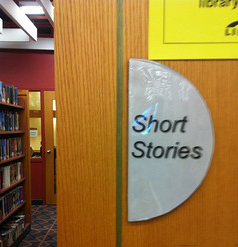
A short story is “an invented prose narrative shorter than a novel” and for our purposes, longer than a tweet. No matter what the length, short stories tell of an event or a series of connected events for the interest of the reader. The elements of plot, conflict, character, setting, and theme distinguish short stories from other types of writing such as character sketches, incidents, personal histories, or anecdotes.
Before you begin writing, it’s not only important to know the elements of a short story, but also to be able distinguish a short story from other prose forms. For instance, which of these two autobiographical incidents would make the best beginning for a short story?
Read the two excerpts that follow and decide which one seems like it is laying the groundwork for subsequent action.
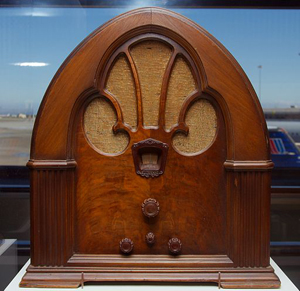
Every day when I was a kid I’d drop anything I was doing, no matter what it was—stealing wire, having a fistfight, siphoning gas—no matter what, and tear like a blue streak through the alleys, over fences, under porches, through secret shortcuts, to get home not a second too late for the magic time. My breath rattling in wheezy gasps, sweating profusely from my long cross-country run I’d sit glassy-eyed and expectant before our Crosley Notre Dame Cathedral model radio.
—Jean Shepherd, “The Counterfeit Secret Circle Member Gets the Message or The Asp Strikes Again”
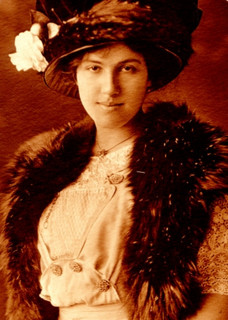
Sometimes, when we kids came home from school, Mrs. Rossiter, the housekeeper, would meet us in the hall and place a warning finger on her lips. We knew what that meant. We must be on our best behavior. The wealthy Mrs. Murgatroyd was calling on Mother. We would be ushered into the Presence, Mother would tell us to stop using our sleeves as a handkerchief, and then Mrs. Murgatroyd would laugh and say, “Oh Annie, let the poor children alone. Sure, you’re only young once.” Then she would lift up her skirt to the knee, fish out a huge wallet from under her stocking, and give us each $2,000,000,000.
—Frank Sullivan, “My Own New York Childhood”
Both selections read like first-person accounts of childhood; both are written with the same purpose, to amuse. In the second excerpt, Frank Sullivan supposedly recalls his own childhood in the gas-lit streets of New York. His recollections include characters like Grandmamma Satterthwaite, who at 87 skipped rope 422 times without stopping, a teacher named Hattie Pumplebutt, and the well-heeled Mrs. Murgatroyd. Based on the outrageous names of his characters, we can infer that Sullivan doesn’t always stick to the facts. It’s implausible that a wealthy visitor would carry such a large sum of money in her stocking to dole out to kids. Despite the monetary exaggeration, however, we get the sense that while this is an amusing anecdote, it’s told without the rising tension of a short story.
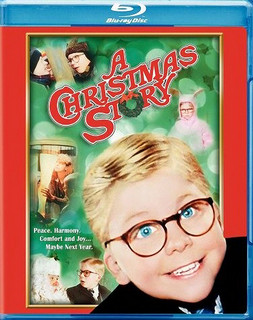
The first selection is by Jean Shepherd, whose story “Red Ryder Nails the Hammond Kid” inspired the movie A Christmas Story. His writing leaves you with questions. For example, you might wonder what radio program attracts a faithful fan.
Based on the narrator’s enthusiasm, you also know something exciting will happen, but you don’t know what. As a result of tension in the rising action, Shepherd helps you anticipate what’s coming next and entices you to read more. This is the beginning of a short story.
As you continue thinking about the elements of a short story and the two examples above, decide which of the following has the least potential to become a short story. After reading each selection, click on the one that is least likely to serve as the beginning of a short story.
Images used in this section:Source: Short Story Shelves, cropped, Canucklibrarian, Flickr
Source: Philco cathedral radio, Gregory F. Maxwell, Wikimedia
Source: Chinese Edwardian Aristocrat, Helen von Mott, Flickr
Source: A Christmas Story at Winterfest, pensacolawinterfest, Flickr
Getting an Idea

Like Shepherd’s and Sullivan’s experiences in the previous section, your own experiences can be mined for short stories. You can use the raw material of your experiences and your observations about how life works to create a small but completely self-contained world.
Your world may mirror the real one so closely that we as readers accept it as the one we walk around in every day. But how do you begin?
A blank piece of paper can be intimidating, but you don’t have to scale the wall of creativity without scaffolding. In other words, you don’t have to start at the first line of your story and plow through in linear fashion to the end.
The creative mind resists a linear approach, responding better to brainstorming or free-association activities. To make it easier to begin, review the brainstorming techniques in the lesson titled “The Writing Process: Generate Ideas and Questions” and do some freewriting.
As an inexperienced short story writer, you’ll be more successful if you write what you know. If you’ve never lived in the Yukon like author Jack London who wrote “To Build a Fire,” you might not know that bitter cold freezes flesh quickly. If you haven’t lived in the nineteenth century, you probably couldn’t convey how it feels to be a young woman without a dowry, as Guy de Maupassant does in “The Necklace.” If you’ve always lived inland, you might not be able to write about the risks of riding the surf in a dinghy as Stephen Crane does in "The Open Boat."
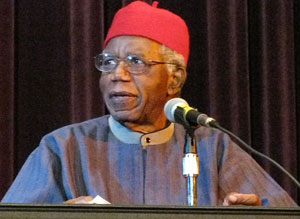
Writer Chinua Achebe says that “To be human one must have a story.” To spark your imagination and think about your own experiences, ask yourself the following questions:
- What story do you often tell others?
- What story do you want to tell?
- What amazing experience have you had that would be of interest to others?
- What unusual thing happened to a member of your family?
- What event presented a challenge, and how did you overcome it?
If your first freewriting session doesn’t yield a story idea, wait a few hours, or even a day, and try again. Freewriting is an incubator. An idea will eventually hatch. If you’re still not convinced that you can write from your own experience, consider one short story author’s literary turning point.
Ray Bradbury began writing short stories at the age of 11. After ten years of writing a short story a week, all of them rejected, Bradbury wrote about a drowning he witnessed as a child. The result was “The Lake,” a short story he sold for $13.75 at the age of 22. Bradbury discovered that a writer should write what he knows. Thankfully, you can learn from him.
Images used in this section:Source: Source: Pen and Paper, CPSutcilffe, Flickr
Source: Chinua Achebe - Buffalo 25Sep2008 crop, Stuart C. Shapiro, Wikimedia
Structuring Plot
You will begin this section on plot with a story instead of a definition.

A man in a rooming house was in the habit of taking off his shoes at night and dropping them on the floor one at a time, with a pause for rumination in between. The lodger below had complained about this many times. One night, after dropping the first shoe, the man suddenly remembered the complaints and put the second shoe down gently. After twenty minutes had passed, an agonized wail came up from the room below. “For God’s sake, drop the other shoe.”
—Damon Knight, Creating Short Fiction
In one way or another, every plotted story makes us wait for the other shoe to drop. A plot is a series of fictional events that builds anticipation. Freytag’s pyramid is a chart of the escalating actions that make up the average plot. The line rises to a point as tension builds and slopes downward as the tension subsides.
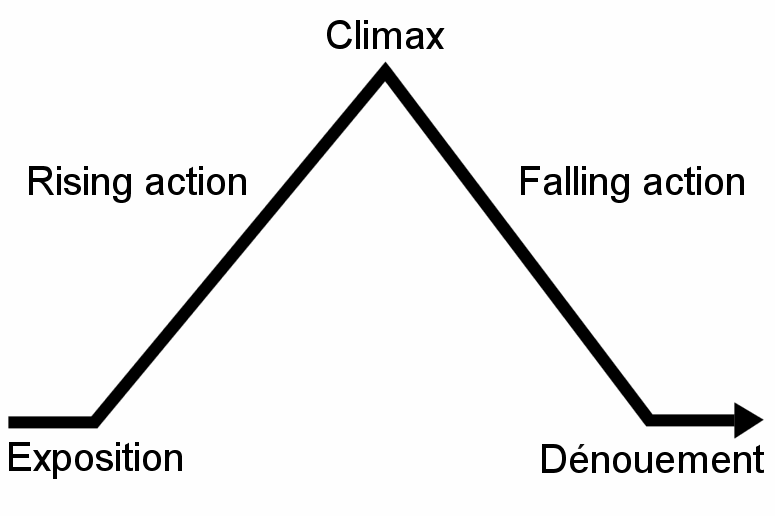
The typical plot is divided into five main elements. Those elements are exposition, rising action, climax or turning point, falling action, and resolution or denouement. We’ll illustrate each element with a familiar fairy tale, "The Three Little Pigs."

- Exposition is the beginning of the story or the situation before the action starts. The author creates the conditions existing at the beginning of the story and describes the setting. The author establishes the main characters with their positions, circumstances, and relationships to one another, and introduces the exciting force or initial conflict. Sometimes called the narrative hook, this initial conflict will continue throughout the story.
A feeble old sow no longer able to care for her three ovine offspring sends them out to make their places in the world. A big, bad, underfed wolf is lurking in the neighborhood.
- Rising Action is the series of events, conflicts, and crises in the story that leads up to the climax, providing progressive intensity that complicates the conflict.
The first little pig hastily throws together a house of straw, and the wolf blows it down. The pig retreats to his brother’s house of sticks, which also proves to be vulnerable to the wolf’s breath on his next powerful exhalation. The homeless brothers make a speedy exit to the house of the third brother, who has painstakingly constructed his home from bricks. The brick fortress resists crumbling despite the best huffing and puffing of the sharp-toothed adversary. The wolf tries to lure the pigs outside, but to no avail.
- Climax is the turning point of the story. A crucial event takes place from this point forward, and the plot moves toward its inevitable end.
The wolf crawls down the chimney where the pigs have a boiling pot of water waiting.
- Falling Action is all of the action after the climax. The main character may encounter more conflicts in this part of the story, but the end is inevitable.
In the sanitized Disney version, the wolf hops out of the pot and runs away clutching his scalded behind. In a more violent version, the pigs wait patiently for bowls of wolf stew.
- Resolution or denouement is the tying-up of the loose ends and all the threads in the story. In this story's conclusion (below), the main characters emerge triumphant.
In this fairy tale ending, the entrepreneurial pigs start a new business. The Piggly Wiggly meat market eventually becomes a grocery chain.
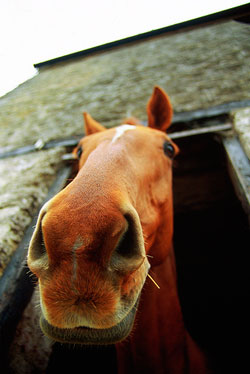
Now let’s look at the bones of a true story and the facts that might be included, point-by-point, fact-by-fact, if you used this incident to plan and write a story. Here’s what happens:
A family leaves on vacation without locking their house, and the horse decides to move in for the weekend. The horse enters the house—and eats much of it—while they are away. Upon their return, the police get involved, and tears are shed (though not by the horse).
Now, knowing this information about this story, imagine that it follows the events listed below. For each phrase, determine where it belongs on Freytag’s pyramid. Is it exposition, rising action, climax, falling action, or resolution? To indicate your answer, drag and drop the number of each item below into the correct column.
Images used in this section:Source: Where Did You Get Those Shoes?, capn madd matt, Flickr
Source: Freytags_Pyramid, Wikimedia
Source: 6765 three little pigs’ houses, kbaird, Flickr
Source: Mr. Ed, HW Photography, Flickr
Building Conflict
In this section about building conflict, let's begin with the first sentence from a story.
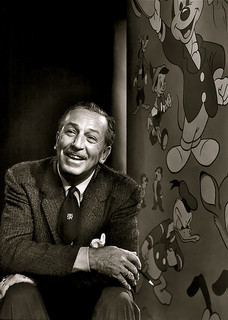

If Dad hadn’t shot Walt Disney in the leg, it would have been the best vacation ever.
John Hughes’ first sentence in “Vacation 58” establishes conflict and hooks you just as if you were a trout on the end of his fishing line. What’s the conflict here? Why would anyone shoot the creator of Mickey Mouse and Donald Duck? You’re compelled to read on to find out why it happened. The conflict in this opening line is integral to the short story. Without it, the story has no fuel, nothing to propel it forward, and no reason for readers to keep turning the pages.
Conflict is the obstacle, barricade, or impediment that thwarts a protagonist. Conflict prevents a character from getting what he or she wants. As you write your short story, you need to create a realistic goal with believable roadblocks that get in the way of the goal. The idea is to get your main character into trouble.
The writing world classifies conflicts in three ways. Let’s take a look at each one.
Man vs. Nature
In Steve Harris’s “A Very Stinky Story,” Pete wants a good-smelling place, and his striped visitor presents a potential obstacle. Pete is the protagonist of the story, and the skunk, nature’s representative critter, is the antagonist. This type of conflict is identified as Man vs. Nature. A number of formidable forces of nature can be in conflict with your character: It might be a mountain to scale, a fish to catch, or arctic cold to survive.
Man vs. Man
Another type of conflict recognized in literature is Man vs. Man. Fiction has plenty of examples of these adversarial relationships: Batman vs. the Joker, Robin Hood vs. the Sheriff of Nottingham, and Uncle Tom vs. Simon Legree. The types of conflict can also overlap. For instance, the real conflict in Uncle Tom’s Cabin is between Uncle Tom and the pre-Civil War society that enslaved him. In this novel, the conflict might be more accurately identified Man vs. Society, with Simon Legree as the corrupt representative of an evil system in society.
Man vs. Himself
Another type of conflict is Man vs. Himself. One classic example of this theme is Robert Louis Stevenson’s Dr. Jekyll and Mr. Hyde. Another example is found in Catcher in the Rye, in which the main character, Holden Caulfield, is primarily in conflict with himself, unable to interact in a phony world.

Man vs. Society
Now that you know about the first three kinds of conflict, read an installment of “A Retrieved Reformation” by O. Henry, a master of surprise endings. The story opens in a prison where Jimmy Valentine is making shoes. O. Henry didn’t have to imagine what it felt like to be behind bars because he had done time for allegedly embezzling money from the First National Bank in Austin, Texas. Jimmy has broken society’s rules, and so the conflict of this story involves Man vs. Society.
We’ll use the first installment of his story “A Retrieved Reformation” to show how the action in a story might unfold. As you examine the elements in O. Henry’s work, think about the idea you came up with while freewriting. The O. Henry story may help you gain a new perspective about how to create conflict and outline a plot in your own story.
Now it’s your turn to identify the main conflict and analyze the plot elements in this carefully crafted work of fiction. When you are finished reading this first installment of “A Retrieved Reformation,” answer the questions that follow.
A guard came to the prison shoe-shop, where Jimmy Valentine was assiduously stitching uppers, and escorted him to the front office. There the warden handed Jimmy his pardon, which had been signed that morning by the governor. Jimmy took it in a tired kind of way. He had served nearly ten months of a four year sentence. He had expected to stay only about three months, at the longest. When a man with as many friends on the outside as Jimmy Valentine had is received in the "stir" it is hardly worthwhile to cut his hair.
"Now, Valentine," said the warden, "you’ll go out in the morning. Brace up, and make a man of yourself. You’re not a bad fellow at heart. Stop cracking safes, and live straight."
"Me?" said Jimmy, in surprise. "Why, I never cracked a safe in my life."
"Oh, no," laughed the warden. "Of course not. Let’s see, now. How was it you happened to get sent up on that Springfield job? Was it because you wouldn’t prove an alibi for fear of compromising somebody in extremely high-toned society? Or was it simply a case of a mean old jury that had it in for you? It’s always one or the other with you innocent victims."
"Me?" said Jimmy, still blankly virtuous. "Why, warden, I never was in Springfield in my life!"
"Take him back, Cronin!" said the warden, "and fix him up with outgoing clothes. Unlock him at seven in the morning, and let him come to the bull-pen. Better think over my advice, Valentine."
At a quarter past seven on the next morning Jimmy stood in the warden’s outer office. He had on a suit of the villainously fitting, ready-made clothes and a pair of the stiff, squeaky shoes that the state furnishes to its discharged compulsory guests.
The clerk handed him a railroad ticket and the five-dollar bill with which the law expected him to rehabilitate himself into good citizenship and prosperity. The warden gave him a cigar, and shook hands. Valentine, 9762, was chronicled on the books, "Pardoned by Governor," and Mr. James Valentine walked out into the sunshine.
Disregarding the song of the birds, the waving green trees, and the smell of the flowers, Jimmy headed straight for a restaurant. There he tasted the first sweet joys of liberty in the shape of a broiled chicken and a bottle of white wine—followed by a cigar a grade better than the one the warden had given him. From there he proceeded leisurely to the depot. He tossed a quarter into the hat of a blind man sitting by the door, and boarded his train. Three hours set him down in a little town near the state line. He went to the cafe of one Mike Dolan and shook hands with Mike, who was alone behind the bar.
"Sorry we couldn’t make it sooner, Jimmy, me boy," said Mike. "But we had that protest from Springfield to buck against, and the governor nearly balked. Feeling all right?"
"Fine," said Jimmy. "Got my key?"
He got his key and went upstairs, unlocking the door of a room at the rear. Everything was just as he had left it. There on the floor was still Ben Price’s collar-button that had been torn from that eminent detective’s shirt-band when they had overpowered Jimmy to arrest him.
Pulling out from the wall a folding-bed, Jimmy slid back a panel in the wall and dragged out a dust-covered suit-case. He opened this and gazed fondly at the finest set of burglar’s tools in the East. It was a complete set, made of specially tempered steel, the latest designs in drills, punches, braces and bits, jimmies, clamps, and augers, with two or three novelties, invented by Jimmy himself, in which he took pride. Over nine hundred dollars they had cost him to have made at----, a place where they make such things for the profession.
In half an hour Jimmy went down stairs and through the cafe. He was now dressed in tasteful and well-fitting clothes, and carried his dusted and cleaned suit-case in his hand.
"Got anything on?" asked Mike Dolan, genially.
"Me?" said Jimmy, in a puzzled tone. "I don’t understand. I’m representing the New York Amalgamated Short Snap Biscuit Cracker and Frazzled Wheat Company."
This statement delighted Mike to such an extent that Jimmy had to take a seltzer-and-milk on the spot. He never touched "hard" drinks.
Images used in this section:Source: Walt Disney in Black and White, tollieschidt, Flickr
Source: That 70’s Crime Show Opening Sequence, jcoterhals, Flickr
Source: Behind Bars, kitsu, Flickr
Outlining Your Own Story

Now it’s time to plot out the major events in your story, following the universal pattern of Freytag’s pyramid. Before you move on to the next stage of the writing process, you need to have a clear sense of the beginning, middle, and end of your story. By plotting out the major occurrences of your narrative, you’ll avoid the mistakes that many fledgling writers make when they write elaborate beginnings and abrupt, dissatisfactory endings.
Click the link to open and download the graphic organizer. You can save, download, and print this file. When you are finished using the graphic organizer, you will have completed the lesson. Graphic Organizer InstructionsYou might consider submitting your story for publication. Click here to access a list of sites that accept student work for publication.
Images used in this section:Source: Note from Montpelier timeline, edmittance, Flickr
Resources
Bierce, Ambrose. “Occurrence at Owl Creek Bridge.” The Collected Works of Ambrose Bierce — Volume 2: In the Midst of Life: (Tales of Soldiers and Civilians). Project Gutenberg. 2004. //www.gutenberg.org/files/13334/13334-h/13334-h.htm.
“Flocabulary- Five Things (Elements of a Short Story).” YouTube video, 3:42. Posted Jan 20, 2011.
//www.youtube.com/watch?v=c6I24S72Jps.
“Funny and Interesting Stories of Albert Einstein.” InterestingEmails.com.
//www.interestingemails.com/funny-interesting-stories-of-albert-einstein/.
Gioia, Dana and R.S. Gywnn, eds. The Art of the Short Story. New York: Pearson Longman, 2006.
Henry, O. “A Retrieved Reformation.” In Roads of Destiny. Project Gutenberg.
//www.gutenberg.org/files/1646/1646-h/1646-h.htm#10.
Hill, Sean. “Very Short Stories: Hilarious Twitter Stories.” Huff Post Books. Updated 1/17/2012.
//www.huffingtonpost.com/2012/01/13/short-stories-twitter_n_1205208.html#s611668.
Hughes, John. “Vacation 58.” Zoetrope 12, no. 2 (Summer 2008).
Knight, Damon. Creating Short Fiction: The Classic Guide to Writing Short Fiction. New York: St. Martin’s Griffin, 1997.
Lucke, Margaret. Schaum’s Quick Guide to Writing Great Short Stories. New York: McGraw-Hill, 1999.
Porter, Katherine Anne. “The Jilting of Granny Weatherall.” In Great Short Stories, edited by Louise M. Schramm, 289–300. New York: Harcourt, Brace, Jovanovich, 1950.
Schulze, Patricia. “Teaching Plot Structure through Short Stories.” readwritethink. International Reading Association.
//www.readwritethink.org/classroom-resources/lesson-plans/teaching-plot-structure-through-401.html.
Shepherd, Jean. “The Counterfeit Secret Circle Member Gets the Message, or The Asp Strikes Again.” In The 50 Funniest American Writers According to Andy Borowitz. New York: Literary Classics of the United States, Inc., 140–149.
Sullivan, Frank. “The Night The Old Nostalgia Burned Down.” New Yorker, May 25, 1946.
Thomson, Amy Restivo. “Elemental Fiction.” Trinity University. August 1, 2011.
//digitalcommons.trinity.edu/educ_understandings/162 .